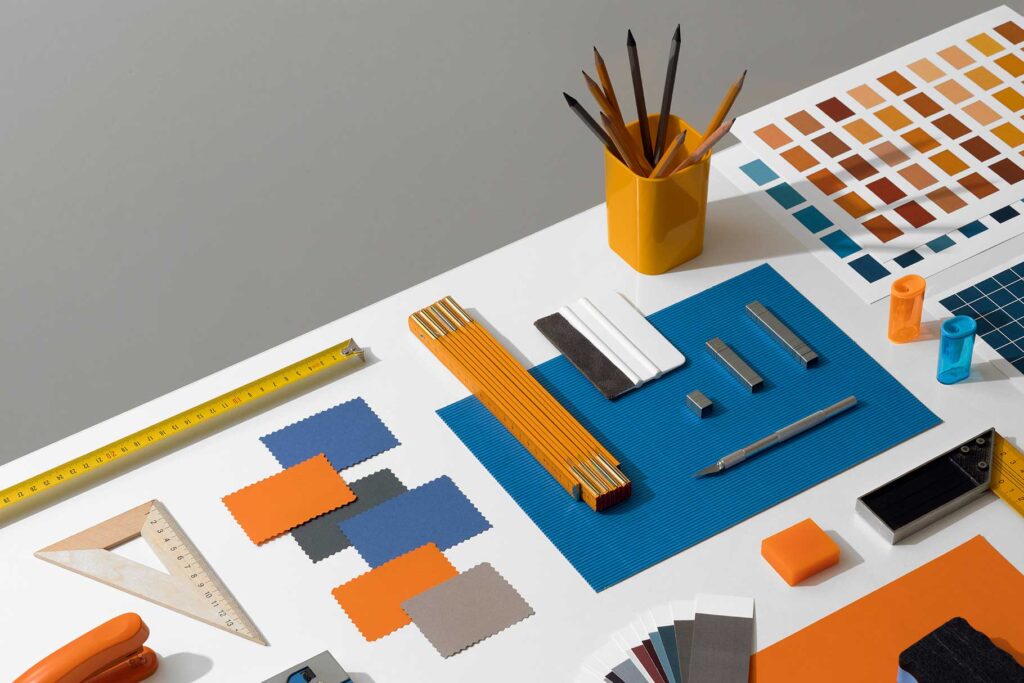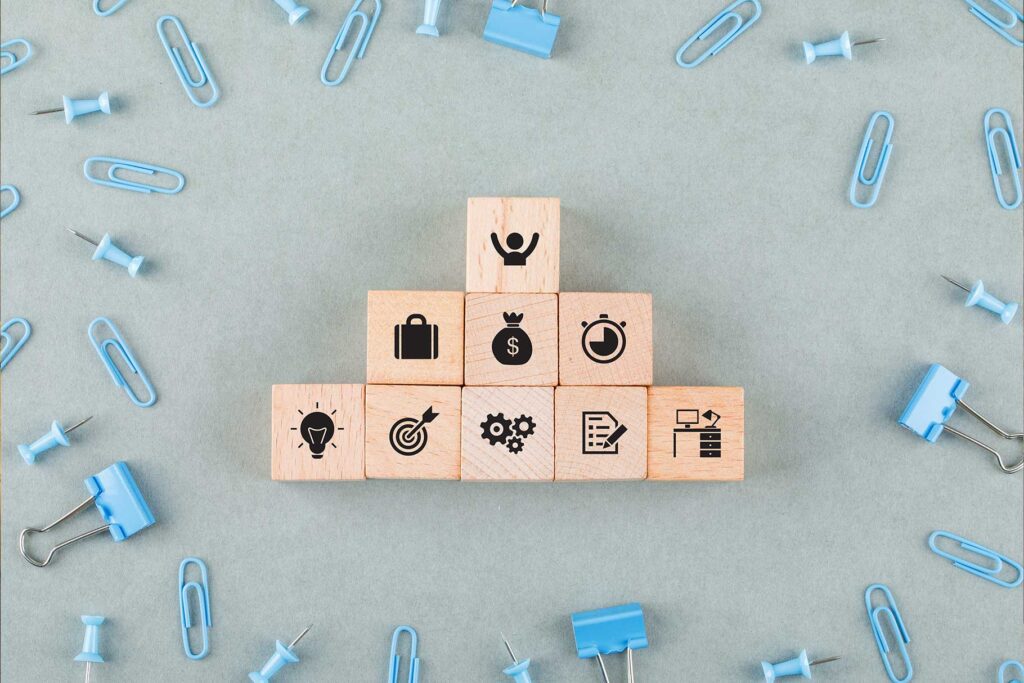In the dynamic realm of graphic design, the fusion of creativity and entrepreneurship opens doors to diverse income streams.
As a graphic designer, navigating the path to financial success requires a strategic approach that goes beyond conventional employment.
This blog will guide you through the intricate art of transforming your design skills into a lucrative career. From mastering essential tools and freelancing platforms to establishing a powerful online presence, we’ll explore proven strategies for maximizing your earning potential.
Join us on this journey as we unveil the keys to not just surviving but thriving in the competitive world of graphic design, where innovation and business acumen converge.
Make Money as a Graphic Designer
1. Building a Strong Foundation

In the realm of graphic design, a robust foundation serves as the cornerstone of a thriving career. The first crucial step towards success involves crafting a standout portfolio that mirrors your versatility and proficiency.
This digital showcase is more than a mere collection of projects—it’s your professional identity. Diversifying your portfolio with a spectrum of skills and styles not only captivates potential clients but also showcases your adaptability.
Moreover, highlighting real-world projects and client collaborations provides tangible evidence of your capabilities.
Mastering essential design tools is equally imperative. Staying abreast of industry trends and technological advancements ensures that your skill set remains relevant in a landscape characterized by constant evolution.
From Adobe Creative Suite to emerging software, a comprehensive toolkit empowers you to bring your creative visions to life.
As you lay the groundwork for your graphic design journey, remember that a strong foundation propels you toward enduring success in this dynamic and competitive field.
2. Freelancing Opportunities

While freelancing can provide tremendous opportunities for artistic and financial growth, it is important to create a strategic approach by finding appropriate platforms that connect artists with clients.
Establishing a compelling profile on platforms such as Upwork or Fiverr is akin to crafting a digital storefront—carefully curating past projects, emphasizing skills, and showcasing a unique creative flair.
Yet, success in freelancing extends beyond the digital realm. Effective client relationships hinge on clear communication, collaboration, and the ability to set realistic expectations.
By delivering quality work consistently, designers not only satisfy current clients but also foster a positive reputation that can lead to future opportunities.
As freelancing continues to reshape the landscape of creative careers, understanding how to navigate these opportunities becomes an essential skill for graphic designers seeking financial independence and professional fulfillment.
Also, read Will AI Replace Graphic Designers? (The Harsh Truth)
3. Creating Passive Income Streams

The concept of passive income becomes even more important in the career of a graphic designer, who must work to generate revenue beyond client projects and commissions.
One effective strategy involves crafting and selling digital assets. Whether it’s stock graphics, illustrations, or templates, these assets become a reservoir of potential income.
Designing and marketing fonts or icon sets is another avenue, that allows designers to monetize their unique creations repeatedly.
Diversification extends further into the realm of education, where online courses become a source of both passive income and knowledge sharing.
By packaging expertise into well-crafted courses, graphic designers can reach a global audience, turning their skills into a sustainable revenue stream.
The beauty of these passive income streams lies in their ability to provide financial stability while allowing designers to focus on their craft, creating a harmonious balance between creative pursuits and financial success in the ever-evolving landscape of graphic design.
4. Establishing an Online Presence

In the digital age, a graphic designer’s online presence is not just a mere formality but a strategic necessity. Building a personal brand is the keystone of this endeavor. Consistency in visual identity across platforms creates a cohesive and memorable image.
Engaging with the vibrant design community on social media platforms not only fosters connections but also amplifies your visibility within the industry.
A professional website serves as your virtual storefront, offering a curated space to showcase your portfolio, articulate your design philosophy, and detail your services. Beyond being a showcase, a well-crafted website is a powerful marketing tool.
Blogging about design trends and insights not only positions you as an authority in the field but also enhances your website’s search engine visibility.
In the competitive landscape of graphic design, your online presence is often the first impression potential clients encounter. It becomes the gateway through which opportunities materialize.
Therefore, investing time in crafting and maintaining a compelling online presence is an indispensable component of a successful graphic design career.
Remember, in the digital realm, where impressions are instant, a thoughtful and intentional online presence is your passport to a world of professional opportunities.
You may also like The Art of Minimalism in Graphic Design (The Ultimate Guide)
5. Networking and Collaborations

A graphic designer’s career is like a complex tapestry; networking and collaborations are crucial to success. Joining vibrant design communities and forums allows you to interact with other designers whose work inspires you, broadening your perspective on what’s possible within the medium.
Engaging with fellow designers not only fosters a sense of camaraderie but opens avenues for potential collaborations and shared projects. These platforms serve as virtual marketplaces for skills, where talent converges, creating opportunities to both learn and contribute.
Equally vital is the attendance of industry events and conferences. These gatherings transcend the digital realm, offering invaluable face-to-face interactions with potential clients, collaborators, and industry leaders.
The exchange of ideas in such settings can lead to collaborative projects that elevate your portfolio and extend your professional network.
Collaborations, whether with peers or clients, bring diverse perspectives to your creative process. Exploring collaborative opportunities allows you to tap into the collective genius of a team, resulting in projects that surpass individual capabilities.
As a graphic designer, recognizing the synergy in collaborations is not just about expanding your network but unlocking the potential for innovative and impactful work that resonates in the competitive landscape of design.
Embrace the power of networking and collaborations as catalysts for growth in your graphic design journey.
6. Diversifying Service Offerings

In the ever-evolving landscape of graphic design, the savvy designer recognizes the importance of diversifying service offerings to not only meet client demands but also to explore new realms of creative expression.
Beyond traditional design services, such as logo and website design, expanding into branding and marketing consultancy broadens your professional scope.
This strategic move positions you as not just a designer but a holistic creative partner capable of elevating a brand’s identity and market presence.
Taking a step further, exploring three-dimensional modeling or animation services adds a dynamic dimension to your skill set.
As businesses increasingly seek immersive and visually engaging content, incorporating 3D elements into your repertoire can open doors to exciting projects in industries ranging from gaming to advertising. This diversification not only enriches your portfolio but also positions you at the forefront of innovative design practices.
By offering a spectrum of services, you not only cater to a broader client base but also future-proof your career in an industry where adaptability is key.
Embracing diverse service offerings not only enhances your professional versatility but also positions you as a multifaceted creative professional ready to tackle the challenges of a rapidly evolving design landscape.
Checkout our latest post about 12 Best Graphic Design Tools to Master in 2023
7. Managing Finances and Pricing Strategies

In the world of graphic design, financial acumen is as important as creative prowess. It’s essential for business success to understand pricing strategies and manage finances effectively.
Setting competitive and fair pricing requires a delicate balance—evaluating the market, understanding the competition, and appraising the unique value you bring to each project. Adjusting rates based on your expertise and the complexity of the undertaking ensures that your compensation reflects the true worth of your skills.
Tracking income and expenses is not merely a matter of bookkeeping; it’s a strategic move toward financial stability.
Leveraging accounting tools designed for freelancers aids in maintaining a clear financial overview, enabling you to make informed decisions about budgeting and investments.
Planning for taxes and establishing a savings mechanism is integral to safeguarding your financial health in the long run.
Navigating the financial aspect of a graphic design career demands foresight and precision. It’s not just about earning; it’s about optimizing your income, protecting your profits, and fostering a sustainable financial ecosystem.
As you delve into the world of managing finances and pricing strategies, remember that financial proficiency is a key differentiator in elevating your graphic design career from a creative pursuit to a flourishing business venture.
8. Overcoming Challenges

A graphic designer must expect to encounter many challenges throughout a successful career and be prepared to solve problems creatively.
Creative blocks and burnout can cast shadows on the most brilliant minds, hindering the flow of ideas and innovation. Overcoming these obstacles requires adopting strategies that nurture creativity, such as taking breaks, exploring new inspiration sources, and embracing collaborative endeavors.
Adaptation is another key facet of a designer’s journey. The industry is a dynamic landscape where technological advancements and evolving trends reshape the playing field continually.
A commitment to lifelong learning and staying attuned to emerging tools and methodologies becomes paramount. The ability to pivot swiftly in response to industry shifts ensures not only survival but a sustained and thriving career.
Navigating the intricate dance with clients and projects also presents its own set of challenges. Dealing with demanding clients and unforeseen setbacks demands a blend of effective communication, diplomacy, and problem-solving skills.
Viewing challenges as opportunities for growth and learning can transform setbacks into stepping stones toward greater professional maturity.
In the constantly evolving world of graphic design, success lies in adapting to change. By developing a mindset that embraces adversity as a catalyst for improvement, graphic designers can navigate the complexities of their profession with grace and emerge stronger, more resilient, and ultimately more successful.
Conclusion
In the ever-evolving world of graphic design, the keys to financial success lie in a combination of creativity, adaptability, and strategic planning.
As we conclude our exploration of how to make money as a graphic designer, it’s clear that building a strong foundation, diversifying income streams, and embracing a business mindset are crucial elements. By showcasing a versatile portfolio, mastering essential tools, and navigating freelancing opportunities, designers can unlock a world of possibilities.
Establishing an online presence, networking, and continuously diversifying service offerings are pivotal for sustained success.
Remember, overcoming challenges is part of the journey. In this dynamic field, embracing change and consistently refining your skills will not only ensure financial prosperity but also cultivate a fulfilling and enduring career as a graphic designer.
Recommended reading: Will AI Replace Graphic Designers? (The Harsh Truth)
FAQs
Q: How can I stand out in a competitive field with my portfolio?
A: To stand out, curate a portfolio that showcases a diverse range of skills and styles. Highlight real-world projects and emphasize your ability to solve design challenges creatively.
Q: What are the essential design tools I should master?
A: Mastering tools like Adobe Creative Suite is essential. Stay updated on industry trends and explore emerging software to ensure your skill set remains relevant in the fast-paced world of graphic design.
Q: How do I determine fair pricing for my design services?
A: Evaluate the market, consider your level of expertise, and assess project complexity. Research industry standards and adjust your rates accordingly to strike a balance between competitiveness and fair compensation.
Q: Can I make passive income as a graphic designer?
A: Absolutely. Consider selling digital assets such as stock graphics or design templates. Additionally, creating and selling online courses based on your expertise can generate passive income over time.
Q: How can networking benefit my graphic design career?
A: Networking opens doors to collaboration opportunities, potential clients, and industry insights. Engage with design communities, attend events, and build relationships to expand your professional circle.
Q: How do I overcome creative blocks and burnout?
A: Take breaks, seek inspiration from various sources, and collaborate with other creatives. Embrace a healthy work-life balance to prevent burnout, and don’t hesitate to step away when needed.
Q: Is it necessary to have a personal brand as a graphic designer?
A: Yes, establishing a personal brand is crucial. A consistent visual identity, active engagement on social media, and a professional website help create a strong online presence, attracting clients and opportunities.
3 thoughts on “How to Make Money as a Graphic Designer”